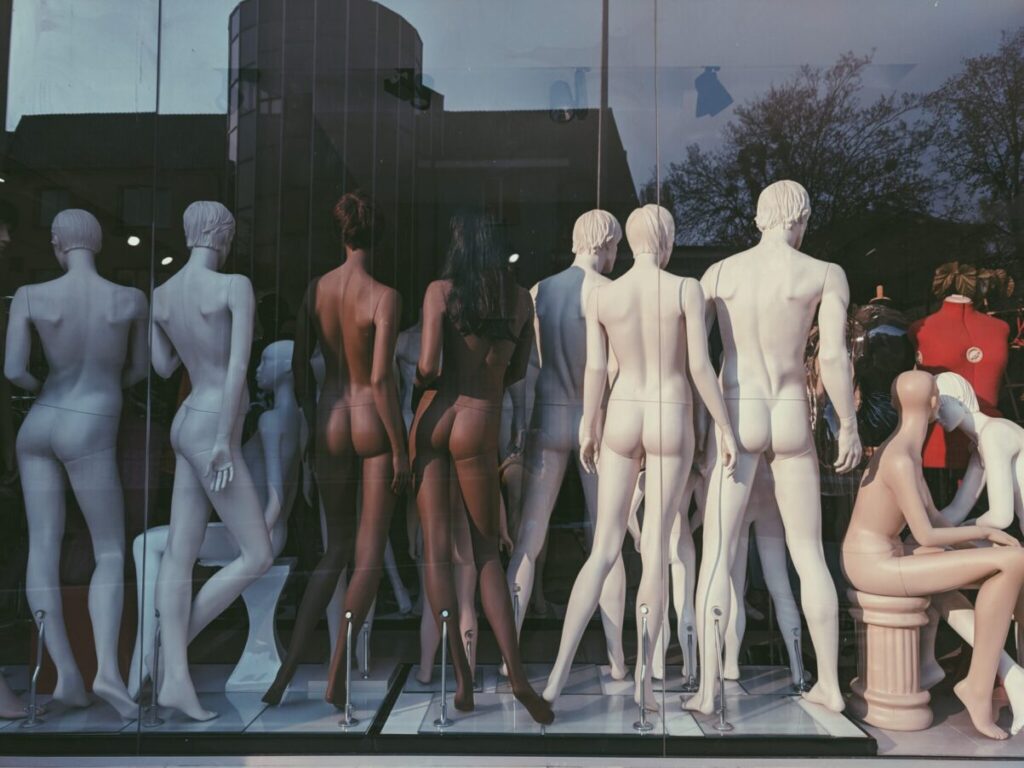The sensation of physical retail
Physical retail allows us to engage with a brand beyond just purchasing products, and the experience adds to our brand perception and loyalty. Yet different brands often go about creating such an experience in distinct ways. While some opt for a maximalist and immersive approach, others prioritise a more intimate and muted environment.
Cast your mind back to the late 2000s when Abercrombie and Fitch had teenagers queueing around the block to experience its overly dark, intensely perfumed stores, and this feels like a world away from the minimalism opted for by millennial cult brands Ganni and Arket, both favourites of those same consumers more than a decade later.
Granted, taste and trends evolve over time and change as we transition into adulthood. Yet we also know that teenagers possess different traits to young and older adults. For instance, sensation-seeking is heightened during adolescence, while risk-aversion tends to be low due to developing brain structures.
So, could retailers potentially construct an optimum shopping experience that is catered to its core consumers’ personality traits?

Shopping for pleasure
Research defines two distinct shopping types: utilitarian – the purchasing of necessities, and hedonic, or leisure, shopping. The latter relates to the social and immersive aspects of shopping for pleasure, and can be defined by dimensions including enjoyment and escapism.
Research finds that our enjoyment of a store is impacted by a range of environmental cues, and this ultimately defines our overall experience. For example, how we perceive a shop can be influenced by its sensual, interpersonal, and physical elements, which researchers call ambient, social, and design cues.
One study identified that positive evaluations of a store’s ambient music and scent resulted in a more pleasurable and engaging shopping experience, while a wide range of well-priced clothing also increases hedonism. Store layout is important for improving flow, which is the idea that the customer is completely absorbed in their experience, to the extent that they lose track of time.
So, it is clear that the more positive our reactions to key in-store features, the more enjoyable our experience will be. And with increased hedonism possibly promoting purchasing or impulse buying, retailers may be interested to understand how they can maximise store performance by inciting hedonic shopping.
The personal shopper
However, it is likely that we all evaluate store characteristics differently, and have varying preferences that contribute to a positive shopping experience. This means the perfect in-store environment may not be as simple as one size fits all. For instance, while one shopper might enjoy and purchase more from a store that is highly stimulating and busy, another may prefer order and organisation.
One study demonstrates that those high in sensation-seeking gain a pleasurable and engaging experience in stores with complex layouts and multiple design features, compared to those who are more risk-averse. Sensation-seekers are those who enjoy novel and varied experiences, it is linked to aspects of extraversion. Conversely, introverted shoppers may find more enjoyment in a well organised, minimal store environment, and feel more compelled to make a purchase when colours and stimuli are limited.
We can suggest that conscientious people, who favour order, would prefer boutique-style shopping over dynamic high-street stores. Or perhaps that those high in openness might enjoy sensory stimulation while shopping due to their need for varied experiences.

Personality’s future in fashion?
Retailers should try to understand the traits of their core consumer and shape their store environment to appeal to their preferences, in order to increase enjoyment and promote purchasing.
We as shoppers can also consider how our personality traits might impact the kind of shopping environments we enjoy. Particularly as we try to limit first-hand shopping to strive for more sustainable habits, selecting stores that appeal to our individual differences may be a novel way of ensuring maximum pleasure and satisfaction from the few purchases we do make.
So, next time you venture down Regent Street and find yourself happily browsing Cos but with a headache in Zara, remember your Big-Five scores might have a lot to answer for!



